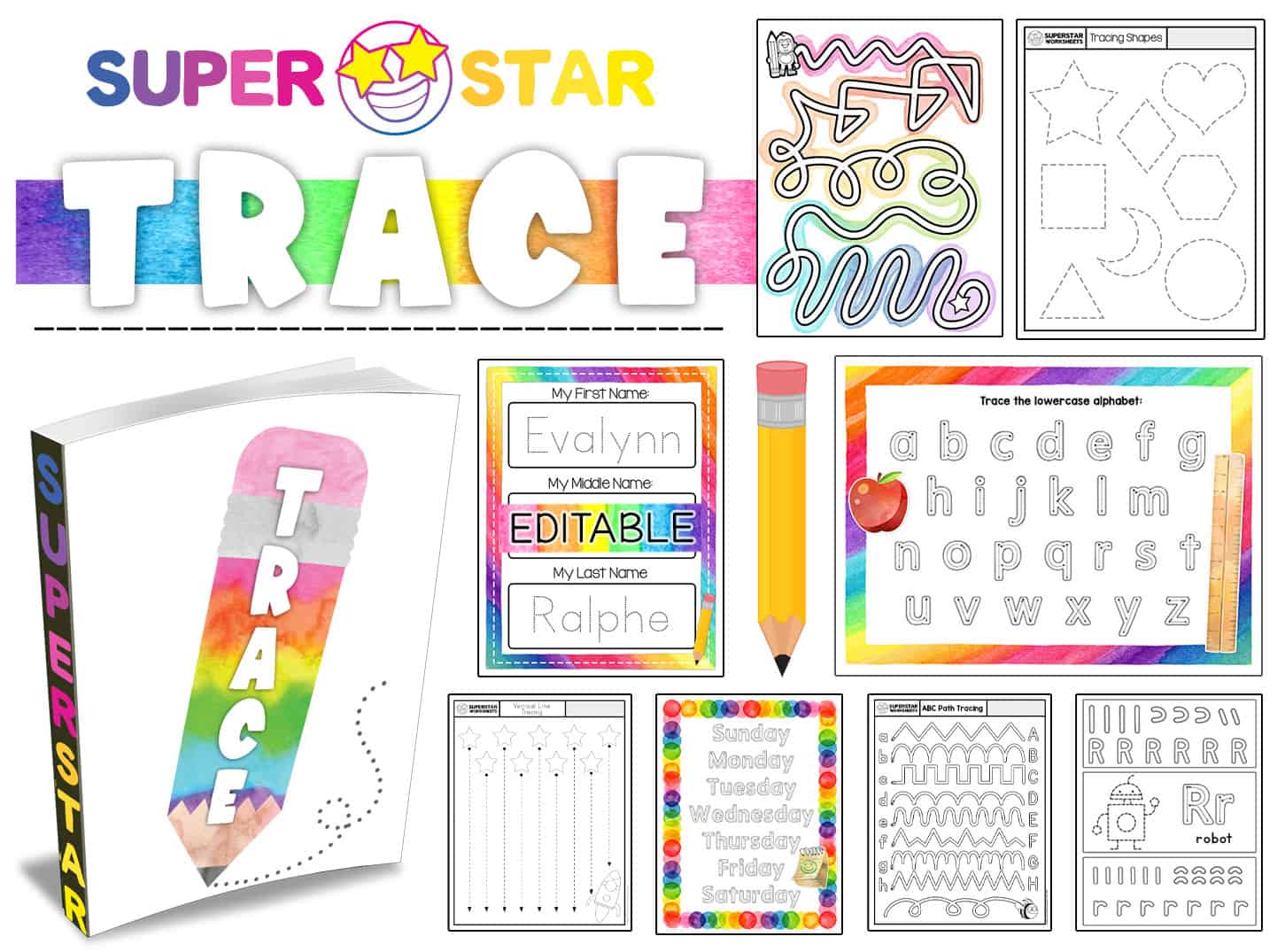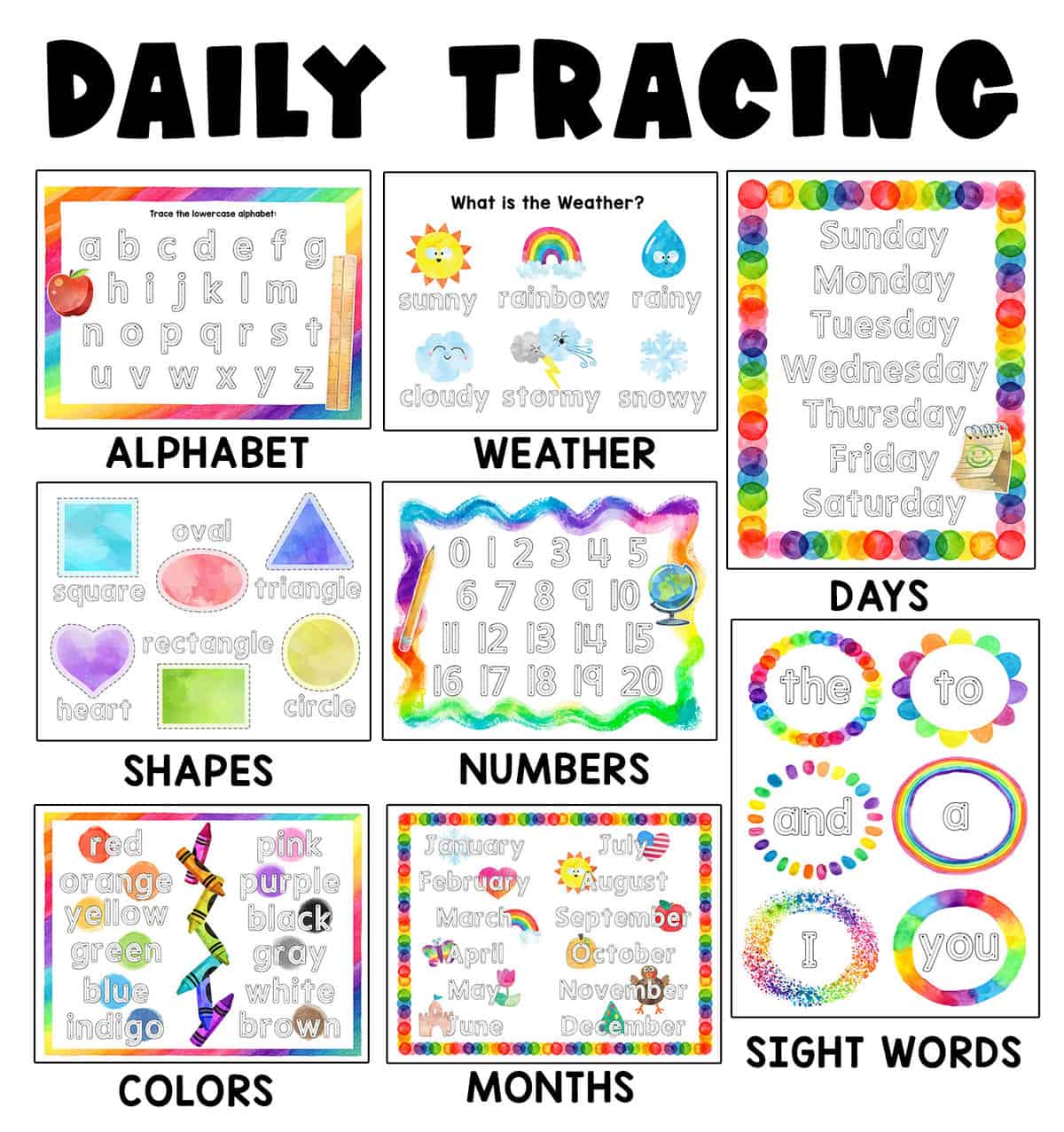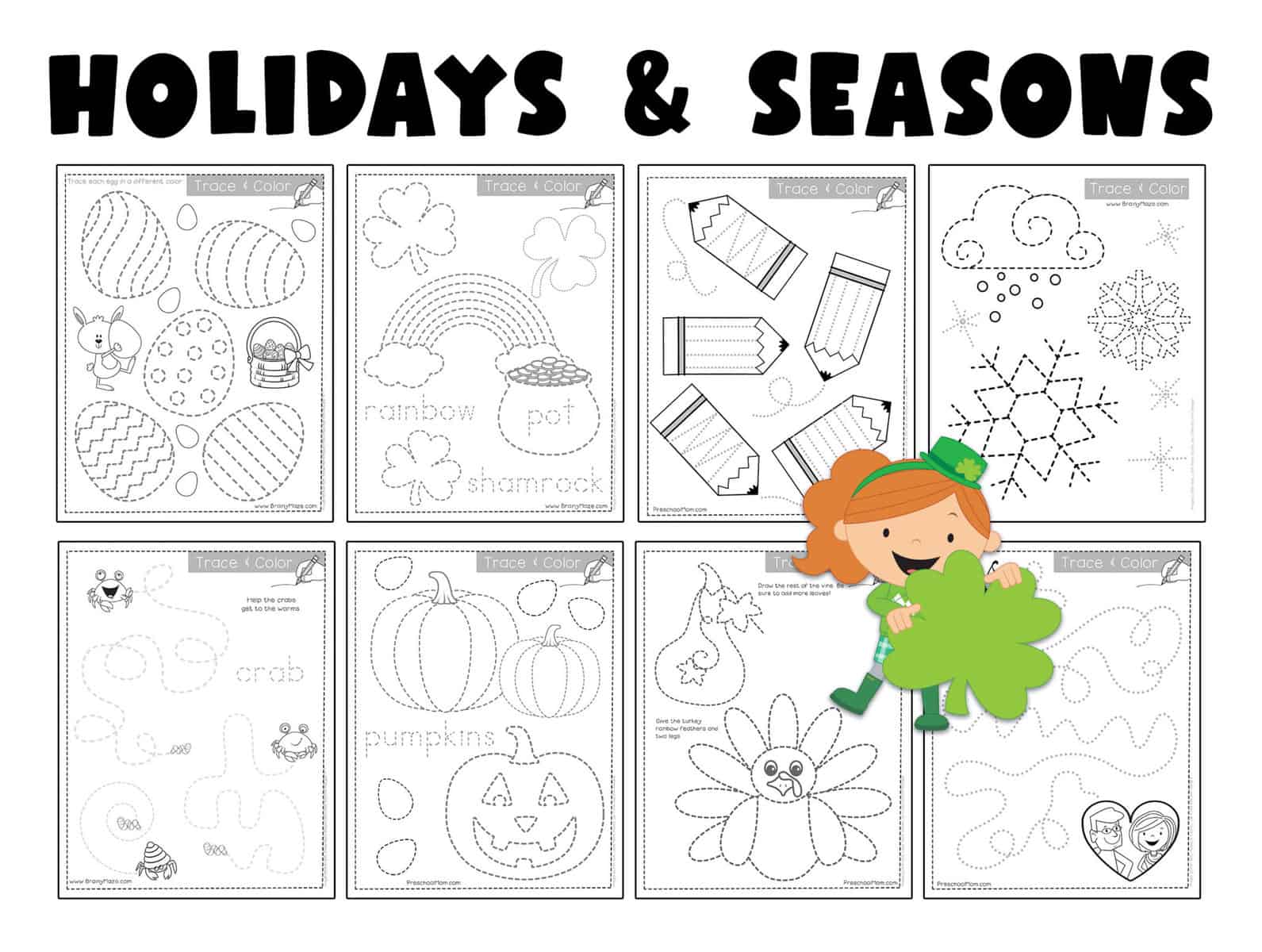Building Fine Motor Skills with Tracing

Reading, Writing, and Arithmetic are the backbones of all education. Usually, people think of writing as essays, poems, and research papers. However, writing includes handwriting in script and manuscript print. So, learning to write and practicing handwriting are in fact important activities. In fact, they are brain-building activities that deserve more time and consideration. What if your child isn’t ready for handwriting or is just starting to learn? Tracing is the name of the game. Here are some reasons and advice on building fine motor skills with tracing.
Why is Tracing Important?
In the grand scheme of things, tracing may seem like a waste of time. However, tracing is an important skill. It prepares the brain for language learning. Also, tracing helps children who have learning differences or language delays to master language. In addition, it helps create muscle memory which will improve handwriting in the long term.

Types of Tracing for Fine Motor Skills
Are you wondering what to trace? There are so many options. Some activities require tracing a shape, letter, or picture on solid lines. Others use dashes, dots, or faint lines with arrows. All of these are considered tracing. Also, connect the dot activities practice the same fine motor skills, they are a higher level of tracing. These will increase pencil control which is essential to legible handwriting. Here are some ideas for tracing type activities:
- shapes
- lines and curves
- letters
- numbers
- name (first and/or last)
- objects (for example: trees, cups, plates, animals, etc.)
- mazes
- connect the dots

How to Setup a Simple Tracing Binder
Having tracing activities ready will make adding this to your day so much easier. Instead of searching for what to do, or printing something new each day, you can have it all in a handy binder. This also makes it easier for your child. Plus, a tracing binder makes a great quiet activity for when you are working with other children, on the phone, or just need your child to be active but quiet. A tracing binder is a collection of tracing worksheets with various activities. Ideally, it would go from easier to harder, so the child will continue building fine motor skills with tracing. Also, use page protectors so the activities can be repeated over and over. Repetition is essential for skill mastery. Include the following items in your simple tracing binder:
- various tracing worksheets
- a pencil case to store pencils or dry erase markers
- page protectors
- dividers for different types of activities or different levels
- stickers and a progress chart to keep track of mastered skills (optional)

Building Fine Motor Skills with Tracing
Fine motor skills are important for learning. They are the foundation of writing, hands-on work, pencil control and creativity. However, fine motor skills are also brain building. So, they help lay the foundation for all learning, even the kind that doesn’t require hands-on activity. Building fine motor skills with tracing is an easy way to prepare your child for school work. In addition, it is extremely important and helpful for children who struggle with language learning. Like copy work, tracing helps cement language patterns, usage, and writing skills. So, include tracing worksheets in your preschool program regularly.
Tracing Worksheets and Activities
Now that you are ready for tracing worksheets to build fine motor skills and pencil control, here’s some of the best bundles around.
- Trace Activity Bundle with over 300 pages or fun!
- Maze Writer for those who just hate to write!
- Pencil Control Workbook for effortless daily practice.








Leave a Reply